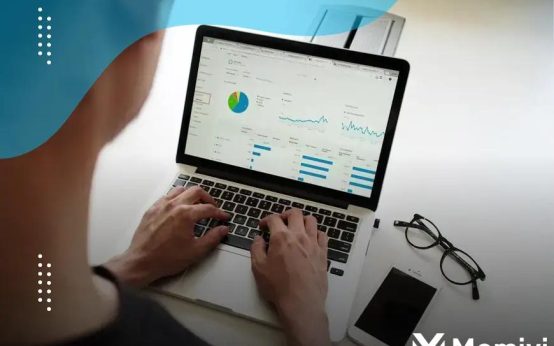
When considering different payment options, it’s crucial to understand the financial risks associated with each. Klarna is a popular choice due to its flexibility, but how does it compare to traditional credit cards in terms of risk? This analysis will provide insights into payment structures, financial impacts, and strategies for safe financial management.
Understanding Klarna’s Payment Structure
To grasp Klarna’s payment structure, it’s important to understand how it operates compared to traditional credit systems. Klarna offers an alternative payment method by allowing consumers to buy now and pay later without immediate interest charges. These purchases can be spread over multiple payment options: pay in 30 days, pay in installments, or financing for up to 36 months. Klarna elevates ease of payment by removing the immediate financial burden at checkout. Payments are typically interest-free, given that the consumer pays within the allocated period.
However, missing payments or defaulting may result in late fees, affecting your overall financial health. This flexible payment system often leads to overspending due to the perceived affordability. The risk arises when users don’t manage these mini debts effectively, potentially accruing higher costs if they miss payment deadlines. Users are attracted to the swift approval process and the lack of a need for an extensive credit check, unlike what credit card companies typically require.
Transparency about the costs associated with failing to meet payment deadlines is crucial. Klarna’s business model leans heavily on consumer reliability in making timely payments. While this payment structure encourages spending, particularly for those who avoid traditional credit avenues due to credit score fears, it poses a financial risk if payments are mismanaged.
Credit Cards: Balancing Risk and Reward
When considering The Financial Risks of Using Klarna vs. a Credit Card, it’s crucial to delve into the delicate balance between risk and reward associated with credit cards. Credit cards offer numerous benefits, such as rewards programs, cashback, and the ability to spread payments over time. These perks can tempt users to rely heavily on their cards for purchases.
However, with rewards come risks. Credit card interest rates are an ever-present danger if full payments are not made on time. Accumulating debt due to high interest rates can lead to financial strain. Late payments not only affect one’s credit score but also come with additional fees and penalties. It’s vital to maintain a disciplined approach, ensuring that spending doesn’t exceed the amount one can repay monthly.
Security features on credit cards, like fraud protection and purchase disputes, offer peace of mind compared to other forms of payment. Users should take advantage of these features to avoid unauthorized transactions and potential financial pitfalls. The ability to track spending through detailed statements helps in maintaining transparency and budgeting effectively.
By balancing the rewards and risks of credit cards, users can harness the benefits while minimizing potential downsides. Setting clear spending limits, automating payments, and periodically reviewing statements can greatly assist in achieving financial stability and capitalizing on the advantages of using credit cards responsibly.
Comparing Financial Impacts
When evaluating the financial impacts of using Klarna versus a credit card, it’s essential to delve deeper into the costs and benefits associated with each. Klarna offers a convenient way to split payments, but consumers should be aware of potential late fees. In contrast, credit cards often come with interest rates on unpaid balances, affecting long-term financial health.
One of Klarna’s key features is the ‘buy now, pay later’ model, appealing for short-term purchases. However, failure to pay on time can lead to additional charges. Credit cards likewise offer a flexibility through credit limits, but they demand responsible usage to avoid interest and penalties.
Budgeting becomes crucial when assessing both options. Klarna might provide interest-free periods, but the reliance on timely payment remains paramount. On the flip side, managing credit cards requires keeping an eye on the annual percentage rate (APR) and credit score implications.
Considering long-term financial health, both Klarna and credit cards have their advantages and challenges. Klarna may not impact your credit score directly, but accumulating unpaid balances can lead to stress. Credit cards, if managed well, can boost credit scores through regular payments. However, the misuse of credit can lead to a debt spiral.
Strategies for Safe Financial Management

Managing your finances can be daunting, especially when choosing between options like Klarna and traditional credit cards. Each payment method comes with its own set of financial risks, making it crucial to implement safe financial strategies.
Start by establishing a budget. Know your income and fixed expenses each month to determine how much discretionary spending you can afford. This budget should include any payments planned for purchases made with Klarna or credit cards.
It’s vital to monitor your spending habits. Use tools or apps to track every purchase you make through Klarna or credit cards. Regularly checking your expenditures helps prevent overspending and ensures you’re in control of your financial commitments.
Set up payment reminders or automate payments to avoid late fees which can be significant with both Klarna and credit cards. These reminders remain crucial, particularly with Klarna’s ‘Pay Later’ feature, which can lead to unexpected financial strain if not managed properly.
Avoid impulse buying by taking 24 to 48 hours to decide on non-essential purchases. This delay can minimize the risk of buying things you don’t need, which often occurs when using seamless purchase methods offered by Klarna.
Consider maintaining an emergency fund. This fund acts as a financial safety net, covering unforeseen expenses without the need to use Klarna or credit cards, which can increase debt.
Regularly review your credit reports. Ensure all transactions, whether through Klarna or credit cards, are accurate and that your credit score is where you expect it to be. Monitoring your credit report can alert you to any fraudulent activities.
Finally, educate yourself about the terms and conditions of both Klarna and your credit cards to fully understand their fees, interest rates, and payment structures. Informed decisions are at the heart of mitigating financial risks.


 Demystifying the UK’s ‘Great Wealth Transfer’: What It Means for Young People. <p class='sec-title' style='line-height: normal; font-weight: normal;font-size: 16px !important; text-align: left;margin-top: 8px;margin-bottom: 0px !important;'> Demystifying the UK's 'Great Wealth Transfer' reveals its impact on future generations. </p>
Demystifying the UK’s ‘Great Wealth Transfer’: What It Means for Young People. <p class='sec-title' style='line-height: normal; font-weight: normal;font-size: 16px !important; text-align: left;margin-top: 8px;margin-bottom: 0px !important;'> Demystifying the UK's 'Great Wealth Transfer' reveals its impact on future generations. </p>  Understanding Your UK Credit File: What’s on It and How to Fix Errors. <p class='sec-title' style='line-height: normal; font-weight: normal;font-size: 16px !important; text-align: left;margin-top: 8px;margin-bottom: 0px !important;'> Learning the ins and outs of a UK credit file will help you make informed financial decisions. </p>
Understanding Your UK Credit File: What’s on It and How to Fix Errors. <p class='sec-title' style='line-height: normal; font-weight: normal;font-size: 16px !important; text-align: left;margin-top: 8px;margin-bottom: 0px !important;'> Learning the ins and outs of a UK credit file will help you make informed financial decisions. </p>  The UK’s Cost of Education: A Breakdown of School Fees and Saving for the Future. <p class='sec-title' style='line-height: normal; font-weight: normal;font-size: 16px !important; text-align: left;margin-top: 8px;margin-bottom: 0px !important;'> In this article, we will delve into various aspects of educational costs in the UK, offering insights into tuition, living expenses, and potential financial aid options. </p>
The UK’s Cost of Education: A Breakdown of School Fees and Saving for the Future. <p class='sec-title' style='line-height: normal; font-weight: normal;font-size: 16px !important; text-align: left;margin-top: 8px;margin-bottom: 0px !important;'> In this article, we will delve into various aspects of educational costs in the UK, offering insights into tuition, living expenses, and potential financial aid options. </p>